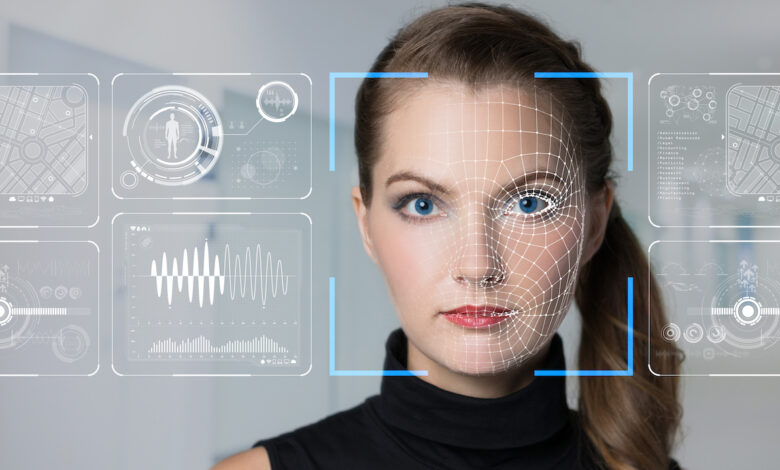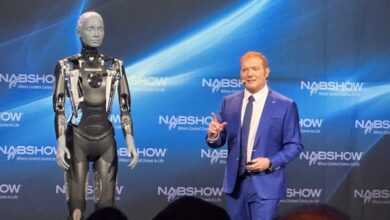The Deceptive Art of GANs

Generative adversarial networks, or GANs, are revolutionizing the field of artificial intelligence, creating images, videos and audio that are increasingly difficult to distinguish from authentic content.
As these AI-generated creations proliferate across the internet, society is grappling with the profound implications of a technology that threatens to blur the line between truth and fiction like never before.
At the heart of GANs lies a simple but powerful concept: two neural networks locked in a constant battle. One network, the generator, creates fake content, while the other, the discriminator, tries to spot the forgeries. As they compete, both networks learn and adapt, honing their skills until the generator can produce content that even the most discerning human eye might struggle to identify as fake.
Myriad Applications
GANs’ potential applications are vast and varied. In the entertainment industry, they’re being used to create realistic visual effects and even entire virtual actors. Researchers are employing GANs to generate synthetic medical images, helping to train diagnostic algorithms without compromising patient privacy. In the fashion world, GANs enable designers to create and visualize new styles and patterns at an unprecedented pace.
GANs have showcased their transformative power across various fields through specific, impactful applications. One example is the work of Nvidia’s StyleGAN. StyleGAN can generate detailed and realistic human faces that do not exist. By training on large datasets of facial images, StyleGAN learns to produce new, high-resolution images with details such as hair texture, skin pores and eye color. These generated faces are often indistinguishable from real photographs, making them useful for applications in video games, virtual reality, and even the film industry for creating digital characters that blend seamlessly with real actors.
Another specific example is the use of GANs in enhancing medical imaging. A project by MIT and IBM Watson Health researchers employed GANs to improve the resolution of MRI scans. Traditional MRI machines often produce low-resolution images that can be difficult to interpret. Using a GAN trained on high-resolution photos, the researchers enhanced the scans’ quality. This improvement allows for better diagnosis and treatment planning, as doctors can see more detailed images of tissues and organs. Additionally, GANs have been used to generate synthetic medical images for training machine learning models, providing a more extensive and diverse dataset without additional patient data, thus preserving privacy and improving AI-based diagnostic tools.
However, as with any powerful technology, there are risks. Deepfakes, or AI-generated videos that can make it appear as though someone said or did something they didn’t, have already been used for political manipulation and harassment. As GANs become more sophisticated, experts fear these deceptions will become harder to detect, eroding trust in media and even threatening national security.
To combat these dangers, researchers are racing to develop tools and techniques for detecting GAN-generated content. Some are exploring using digital watermarks or other subtle indicators that could help distinguish real from fake. Others are advocating for greater public awareness and media literacy, arguing that we all need to become more savvy consumers of digital content.
Useful Tools
Despite the concerns, proponents of GANs argue that they are ultimately tools, and like any tool, their impact depends on how they’re used. They point to the many positive applications, from creating more engaging video game worlds to helping architects and urban planners envision and refine their designs. They note that even as GANs become more advanced, they will always have a role in human creativity and judgment.
As GANs evolve, the collaboration between human intuition and machine learning will likely take on new and unexpected forms. Some envision a future where GANs are used to create entire virtual worlds, indistinguishable from our own. Others see them as tool for solving complex problems, from discovering new materials to designing more efficient transportation networks. Whatever the future holds, one thing is clear: GANs are blurring the lines between the real and the artificial, and in doing so, they’re forcing us to reconsider what we think we know about reality itself.
As GANs become more advanced and their applications more widespread, society will need to grapple with the profound implications of this technology. From the legal and ethical challenges posed by deepfakes to the philosophical questions raised by AI-generated art, GANs will surely be at the center of many debates in the future. It will be up to researchers, policymakers and the public to find ways to harness the power of GANs while mitigating their potential for harm.
For all PYMNTS AI coverage, subscribe to the daily AI Newsletter.



